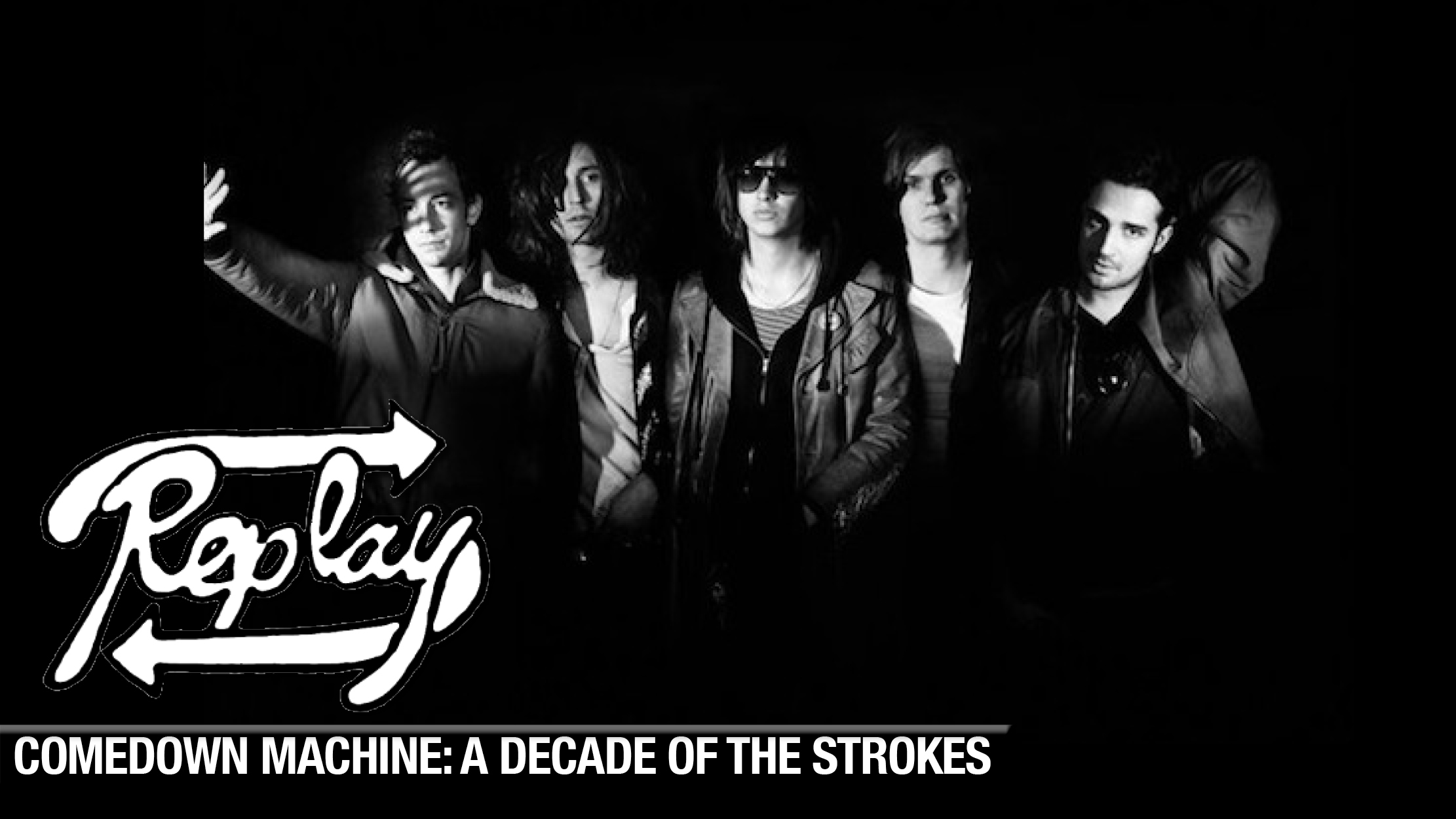Comedown Machine: A Decade of The Strokes
 By Shea Garner
By Shea Garner
Next time you’re on the quad, take a look at our diverse student body and you’re guaranteed to spot a whole lotta Ray Bans and faux-leather jackets. Hell, I own Ray Bans and a faux-leather jacket. And as the new Strokes album Comedown Machine, out today, pumps through my headphones, I can’t help but think how much our indie subculture owes to The Strokes. Julian Casablancas and his band exude swagger, and basically defined the rebelliousness of young adulthood in the early 2000s. “Fuck yeah, that’s rock n’ roll,” I thought, watching a kid snuff out a cigarette with his combat boots at the bus stop, as Albert Hammond Jr.’s signature guitar licked my eardrum.
Google a picture of Julian Casablancas. He probably looks like he just got out of bed— his eyes masked by a pair of dark shades hidden behind his long greasy hair. He looks strung out, like he clearly doesn’t give a shit, and that’s because he doesn’t. But that’s what makes him, and The Strokes, so damn cool. “I didn’t take no shortcuts/ I spent the money that I saved up/ Aw mama runnin’ outta luck/ But like my sister don’t give a fuck,” he sings on “Barely Legal,” from their landmark 2001 debut Is This It. Their sound, full of raw guitars paired with Casablancas’ lo-fi vocals, is unmistakable. But The Strokes, much like some modern US version of The Beatles, weren’t just building a sound— they were building a brand.
But, like The Beatles or any band that achieved instantaneous success and acclaim, they weren’t without their issues. They signed one of the biggest independent contracts in rock history, a five-album deal with RCA, before even releasing their first album. That’s a long time and lot of records to commit to before knowing what the band really was…or what it could be. And after putting out their sophomore album Room On Fire in 2003, critics began questioning whether or not they were confined to their own sound. So what did The Strokes do? They began experimenting.
Their subsequent albums, 2006’s First Impressions of Earth and the 2011 “comeback” record Angles, expanded their sound and aesthetic to mixed reactions. The same naysayers that claimed they were confined to their sound wanted the old Strokes back. After a five-year break and various side projects, rumors grew of tension within the group. Reports even claimed Casablancas refused to show up to any of the Angles sessions with the band, recording his vocals separately. Maybe the pressure of indecisive critics and fans was finally getting to them. But these guys refuse to conform and have redefined their sound (yielding the best results in years) on Comedown Machine.
Casablancas rightfully joked on Twitter that they almost named the album “Rollerbladin’,” and for good reason. The 80s influence on the record is strong, with funky bass and bouncy synths. Casablancas even experiments with a high-pitched falsetto on the single “One Way Trigger.” The album features some of their best songs to date and feels like a more complete body of sound after the scattershot Angles. The infectious lyrics on “Welcome to Japan” and rhythmic guitar plucking on “Tap Out” reflect The Strokes’ first era of innovation. Comedown Machine marks the end of their monumental contract with RCA and certainly leaves the listener wondering about the future of the band. With a media blackout surrounding the record and no current plans to tour, could this be the end The Strokes? I’m not sure, but I’d be lying if I said Comedown Machine doesn’t encourage me to grow out my locks—Casablancas style.
What are your thoughts on The Strokes? Let us know in the comments below, or on Twitter @jerkmagazine.

